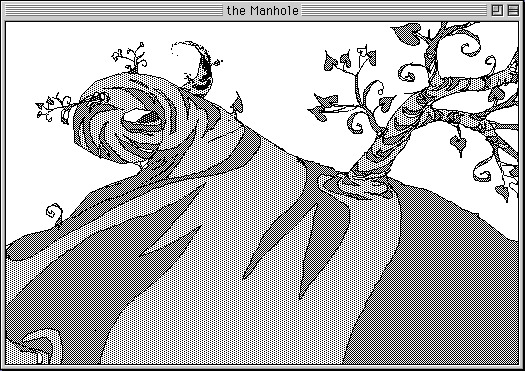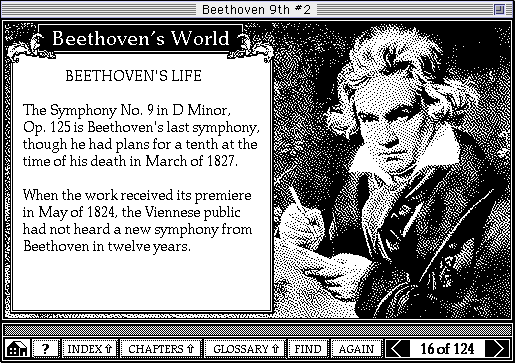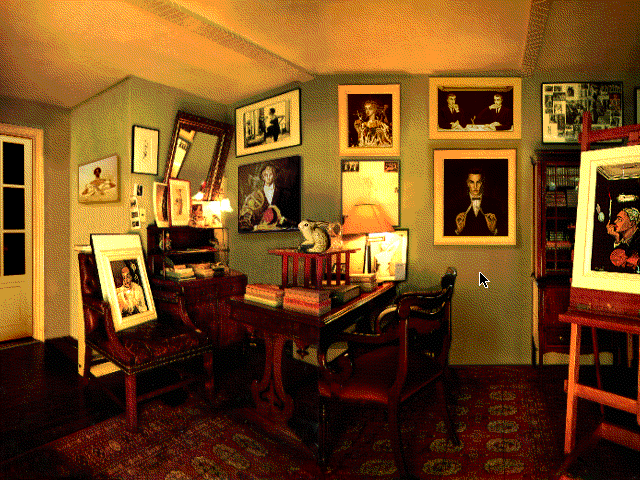A Chronology of First CD-ROM Games
I've seen many CD-ROM retrospectives that credit Myst and The 7th Guest (both 1993) as the "first CD-ROM game" or "first CD-ROM adventure". Other sources may cite games a year or two earlier, or into the 80s, but there's little consistency in the definition of what a "CD-ROM game" even is. Is it any game on a CD-ROM? Is it a game created first or solely for CD-ROM, or does a CD version of a floppy game count? Does it only count computer games and not console games?
In response, I've created a timeline of CD-ROM firsts, covering a wide variety of categories across multiple platforms and multiple years. Perhaps having so many "firsts" to choose from from makes the entire question a bit moot, but let's be thorough.
First CD-ROM game, any format: Fighting Street (PC Engine CD, 1988) / No-Ri-Ko (PC Engine CD, 1988); First CD-ROM adventure, any format: No-Ri-Ko (PC Engine CD, 1988)
When we talk about early CD-ROM we usually talk about computers, but the first consumer CD-ROM device was actually NEC's PC Engine CD (TurboGrafx CD), which launched on December 4, 1988. An add-on device for the cartridge-based PC Engine system, it added a single-speed CD-ROM drive and the ability to play new games made especially for the new format. When it launched, it had precisely two games: Fighting Street and No-Ri-Ko.
 (Rev 5)-0003.png)
Fighting Street is a conversion of Capcom's 1987 arcade game Street Fighter, the first game in the Street Fighter series. This is a weird choice to launch a CD-ROM system with. It's transparently a game that could have been made on a cartridge format, because it was in arcades. It makes use of the CD-ROM format primarily for a new arranged CD audio soundtrack which, while impressive, is hardly transformative. The actual game itself is a rough version of an already unimpressive game.
-0016.png)
No-Ri-Ko, meanwhile, is an original game and something much stranger. Based on real-life idol singer Noriko Ogawa, it shows off via resources a cartridge game simply couldn't have held at the time. In terms of gameplay, it's a straightforward, largely linear visual novel. Gameplay consists mostly of reading text, with the occasional choice for branching. It's much simpler than the other menu-based adventures that would later dominate the platform, but similar to many modern visual novels.
What's noteworthy here is its presentation. It makes heavy use of digitized photos for its characters, including photos of Noriko herself. These are low-colour and at best moderate detail, but in 1988 they would have impressed an audience who wouldn't have seen anything like it before. These scenes are mostly static and non-animated; it certainly doesn't feature any of the full motion video we'd expect from a CD-ROM game a few years later. The most complex sequences, the concert scenes, imply MTV-style video editing by overlaying multiple stills and shifting the backgrounds. The data track, filled with these digitized images, is a mere 16 megabytes—tiny by modern standards, but still close to six and a half times the largest cartridge game for the system[1] and large enough to have required ten floppy disks. The CD audio section of the disc allows it to reproduce several of Noriko's hit songs in in-game performances—another aspect that's tired today, but which would have been remarkable in 1988.
It's hardly what we think of as a "CD-ROM adventure", but by being one of the first two CD-ROM games No-Ri-Ko is the first CD-ROM adventure game on any format.
First computer CD-ROM adventure: The Manhole (Mac/DOS, 1989)

Cyan's The Manhole, originally released for Mac in 1988, is an incredibly charming digital toy. It features an Alice in Wonderland-like plot in which the player lifts a manhole cover to discover a beanstalk leading to a fantasy world full of charming creatures. More of a playground than a traditional "game", it has no set goals and no ending; players are free simply to click around, explore, and find hidden interactions on every screen. In its format it's similar to a lot of CD-ROM adventures that would follow, not only other digital playgrounds but also Cyan's own Myst (1993).
The Manhole was originally released as on floppy disk, but in 1989 it was rereleased as a CD-ROM for both Mac and DOS. This version has identical gameplay to the original but uses the CD-ROM to add CD music and voice acting to the previously text-only game. As a conversion of a floppy disk, it's easy to argue it's not a "true" CD-ROM adventure game. It could have been released on floppies because it was a floppy game first.
First reference CD-ROM (any format): Ludwig van Beethoven: Symphony No. 9 (Mac, 1989)

The Voyager Company was founded to release multimedia and were all in on CD-ROM as soon as it was commercially available. Of their early CDs, Symphony No. 9 is noteworthy as the very first educational/reference CD for any format. In addition to a full recording of the symphony itself, accessible on a standard music CD player, it contains detailed liner notes and reference information in a CD-ROM format using Apple's Hypercard[2]. The primary feature is a passage-by-passage listener's guide, allowing the user to navigate freely through the symphony in software while reading notes specific to the current passage. Just controlling a CD via software was significant enough, but the ability to navigate through the music via its annotations was genuinely transformative.
The rest of the content is a bit slim by modern standards; aside from a simplistic quiz on Beethoven and the symphony itself, it contains mostly-linear text information on Beethoven and the symphony. CD-ROM reference books would develop into full-size encyclopedias and more in the years to come, but it all began with this CD.
Voyager would continue developing this format and would eventually label their Hypercard-based reference discs "Enhanced Books", with many more to follow through the 90s. They eventually left the CD-ROM market and are better-known today for the little DVD line they publish.
First edutainment CD-ROM (any format): Magical Saurus Tour / Magical Dinosaur Tour (PC Engine CD, 1990)
The "edutainment" CD is one of CD-ROM's most enduring stereotypes, one of those kinds of discs that aged out immediately and that many kids were tired of even when they were new. These games combine educational content like animations, cartoons, or minigames with encyclopedias or other educational reference material.
-0009.png)
Magical Dinosaur Tour, known in Japan as Magical Saurus Tour, is the first edutainment disc for the PC Engine CD and possibly the first edutainment disc for any platform. Developed by Fun Project, a studio closely associated with the platform, it's a straightforward take on the format. It features a basic dinosaur encyclopedia in which players can look up dinosaur species by name or by category alongside some animations which dramatize dinosaur prehistory. As the first edutainment disc, it's perhaps fitting that it's such a simple version of the genre.
First CD-ROM native adventure game for computer: Alice - I Can't Explain Myself (Mac, 1991)

The last entry in our chronology is the first computer CD-ROM adventure game that can be seen as truly native to the format. Haruhiko Shono's Alice: I Can't Explain Myself, first released for the Mac in 1991[3], is both an art gallery and an adventure game. On one level, it serves as a museum of Kuniyoshi Kaneko's artwork, containing dozens of his paintings across twelve rooms. More than that, however, it's a surreal adventure in which players explore those rooms to uncover mysterious passageways through unreal spaces in order to travel between rooms and locate a set of 53 cards.
Its "click around and experiment" format is familiar to players of The Manhole or later CD-ROM games, and it's noteworthy not only for its artistry but also for the incorporation of materials that simply couldn't have been possible without the storage capacity of a CD-ROM.
From assembling this list, one major thing stands out: not everything that I've documented here makes most "important CD-ROM game" lists. There's an important distinction between something being the first and something being artistically important and significant. There's a reason we call them "Mystlikes" and not "NoRiKolikes"[4]. "First of" lists are a fun piece of trivia, but there's a difference between trivia and genuine artistic relevance. The next time you read history in the form of a listicle of dates or items, ask yourself: what's it communicating, and what's the real significance behind it?
1. Street Fighter II': Champion Edition, released in 1993. ↩
2. vershbow, ben. (2005). The Beethoven's Ninth Symphony CD Companion. The Institute for the Future of the Book. https://www.futureofthebook.org/next/text/precursors/ ↩
3. A version for both Mac and Windows was released internationally in 1994 as Alice: An Interactive Museum. ↩
4. Hat tip to Shadsy for coining this incredible term. ↩